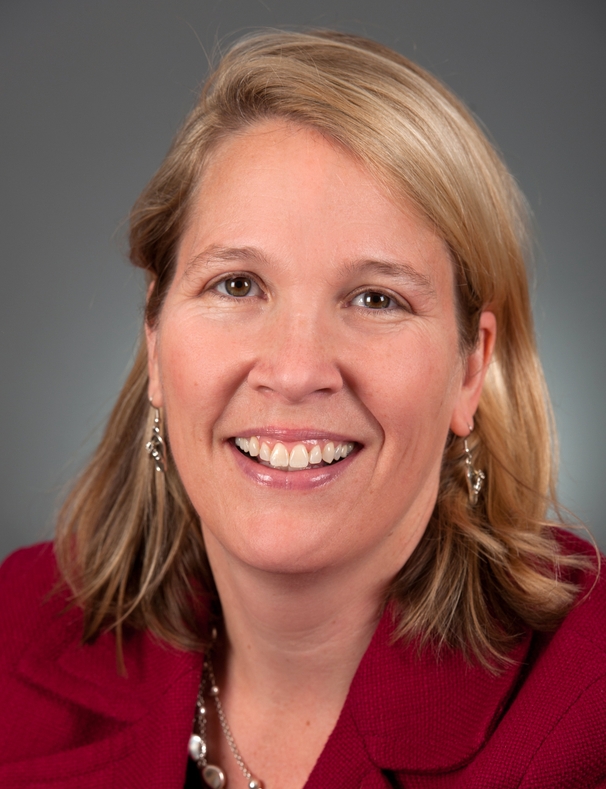Panel urges new genetic test for neurodevelopmental disorders

An international group of doctors and scientists, led by Boston Children’s Hospital, is urging the medical community to embrace — and health insurers to pay for — a new genetic technology as a first-line test for autism and other disorders affecting the development of the brain and nervous system.
In a paper published last week in Genetics in Medicine, the panel argues that exome sequencing, a technique that reads the most critical one percent of a patient’s genetic code, is twice as effective as current technologies at finding the roots of neurodevelopmental disorders.
Adopting the new technology, the experts say, will save patients and families years of expensive, frustrating — and in most cases fruitless — tests and procedures with a single, painless test much more likely to give them the answers they seek. [See companion article: New genetic test yields answer after family’s 10-year search]
Potential impact

The effort to champion exome sequencing is led by Boston Children’s Translational Neuroscience Center (TNC), whose goal is to convert research findings into new diagnostic tools and treatments that improve the lives of patients and families.
“Of all the things we’ve done, I think this has the potential to have the most impact,” says Mustafa Sahin, MD, PhD, the TNC’s director and a senior co-author of the paper. “People don’t realize how much technology has changed — and how much we can’t do because insurance won’t pay for it. So if we can move the needle, that would be great.”
Diagnostic odyssey
For many parents, the realization that a child is missing key milestones like walking, talking and making eye contact is the beginning of a long diagnostic odyssey in search of answers. “The first thing they want to know is: What caused it?” says Kira Dies, ScM, CGC, a senior genetic counselor at Boston Children’s.

Because there’s so much variation in rates of development, most children do not come to medical attention until age three, and some not until five or six. And even once a problem is recognized, they may see many specialists and undergo multiple tests whose results are negative or inconclusive.
“In many cases, there is a genetic cause, but we never can figure out exactly what the abnormality is,” Sahin says.
Twenty years ago, as a medical resident, Sahin saw a patient with an unusual neurological condition. For 15 years, he tried MRIs, EEGs, and tests of various genes and metabolites in an attempt to find the cause of his patient’s symptoms — all to no avail. Finally, exome sequencing revealed an extremely rare genetic mutation known to affect only a handful of people around the world. “That, to me, is the diagnostic odyssey these patients go through,” Sahin says.
One reason it’s so difficult to identify the genetic causes of neurodevelopmental disorders is that there are so many possibilities. “The list of genes that could be the explanation is quite large, so it’s hard to guess what’s the right test,” says David Miller, MD, PhD, a geneticist in Boston Children’s Division of Genetics and Genomics. “So tests that check a lot of things at once are very helpful.”
Evolution of genetic testing
Until a decade ago, the state of the art in genetic testing was a technique called karyotyping, which involved examining chromosomes — the thread-like collections of DNA found in the nucleus of each human cell — under a microscope. Unfortunately, karyotyping was able to find the genetic causes of unexplained neurodevelopmental disorders only about three percent of the time.

In 2010, Miller helped convince the medical community to embrace a new technology called chromosomal microarray (CMA), which uses molecular probes to search a cell’s 23 pairs of chromosomes for extra or missing copies of genes. CMA was a major advance, able to find the genetic roots of neurodevelopmental disorders 15 to 20 percent of the time. It became a first-line test, covered by most insurance providers.
But over the last decade, exome sequencing has emerged as a promising alternative. “There still are going to be uses for chromosomal microarray,” says Miller, a senior co-author of the Genetics in Medicine paper. “We’re just pointing out that technology has advanced, and now there’s a better option that gives you more answers.”
Scanning thousands of genes for spelling mistakes
Whereas CMA examines the chromosomes, exome sequencing looks more closely at the DNA the chromosomes contain. But instead of looking at the entire human genome, it focuses on just the exome: the one percent of DNA that’s involved in coding for proteins, the molecules that carry out most of the business of life.
To understand the difference between the two techniques, Miller suggests thinking of your genes as books in a library. “Chromosomal microarray is like walking into the library and looking at all the bookshelves to see if there’s a section of books missing,” he says. “But it doesn’t read any of the books, and a lot of genetic problems are caused by spelling mistakes on individual pages in those books. Exome sequencing opens up thousands of books and reads them letter for letter to look for those spelling mistakes.”

It’s estimated that about 85 percent of the genetic mutations that cause diseases and disorders are found in the exome. And since sequencing a person’s exome is less expensive than sequencing a whole genome, it may be an efficient and cost-effective option. But is it a reliable way to find the genetic roots of neurodevelopmental disorders?
Exome sequencing the clear winner
To find out, 12 experts from Boston Children’s and other institutions in the United States, Canada, and Europe reviewed the medical literature for articles on genetic testing for three neurodevelopmental disorders: autism spectrum disorder, intellectual disability (what used to be called mental retardation), and global developmental delay, often a precursor to intellectual disability.
From an initial collection of nearly 1,000 articles, the group selected just 30 that met their strict criteria. They included results from the United State, Europe, Asia, and the Middle East. A second group of experts from a half dozen relevant fields then met in Boston for an all-day Consensus Development Conference to analyze the results.
They found that exome sequencing had a “molecular diagnostic yield” of 36 percent, about double the 15 to 20 percent of chromosomal microarray. In other words, exome sequencing is about twice as effective as CMA in finding a known genetic cause for a patient’s neurodevelopmental disorder.
On the basis of this finding, the group recommended that exome sequencing be adopted as the first test conducted for unexplained neurodevelopmental disorders.
Benefits of genetic testing

Even though the identification of a genetic cause often comes years after a disorder has begun, the knowledge can have multiple benefits for patients and families. When the cause is a new mutation not found in either parent, that can relieve the sense of guilt many parents feel about possibly having passed the disorder on to their child. The information can also help parents make decisions about whether to have more children.
Identification of a specific genetic anomaly sometimes allows parents to find support from other families dealing with the same condition. “It’s been very meaningful to a lot of parents to feel that connectedness with other families who can understand what they’re going through,” says Lisa Prock, MD, MPH, director of the Developmental Medicine Center at Boston Children’s and clinical director of the TNC.
Knowing the specific genetic cause may also open the door to clinical trials of treatments meant to reverse or alleviate patients’ symptoms. “We’re moving toward a future where we may be able to come up with specific, targeted treatments, whether it’s gene therapy or some other type of intervention,” says Siddharth Srivastava, MD, a neurologist at Boston Children’s and a first co-author on the Genetics in Medicine paper.
“And that’s not just a dream,” Sahin adds, noting that clinical trials are already under way or in the pipeline for treatments of Rett syndrome, tuberous sclerosis, and other neurodevelopmental disorders.
Who will pay?
The advocates of exome sequencing hope to gain the support of professional societies in the fields of genetics, neurology, and developmental medicine. But it will ultimately be up to individual health insurance companies to decide whether to cover the costs of exome sequencing.

While exome sequencing is currently more expensive than chromosomal microarray, the cost is dropping fast, and exome sequencing may eventually offer insurance companies a chance to save money by streamlining the diagnostic process with a single test that can eliminate many of the costly and unproductive tests families go through now.
It may take several years for the health care industry to make its decision — just as it did for insurers to agree to pay for chromosomal microarray testing. “But the insurance companies can move pretty quickly when they want to,” Miller says.
Srivastava and Jamie Love-Nichols, MS, MPH, CGC, a genetic counselor at the Translational Neuroscience Center, were first co-authors on the paper. Sahin and Miller were senior co-authors. Prock and Dies were also co-authors. For a complete list of co-authors, see Genetics in Medicine. Financial support for the Consensus Development Conference was provided by the Wade Family Foundation.
Related Posts :
-

New research sheds light on the genetic roots of amblyopia
For decades, amblyopia has been considered a disorder primarily caused by abnormal visual experiences early in life. But new research ...
-

Thanks to Carter and his family, people are talking about spastic paraplegia
Nine-year-old Carter may be the most devoted — and popular — sports fan in his Connecticut town. “He loves all sports,” ...
-

Genetic causes of congenital diarrhea and enteropathy come into focus
Congenital diarrheas and enteropathies are rare and devastating for infants and children. Treatments have consisted mainly of fluid and nutritional ...
-

Genomic sequencing transforms a life: Asa’s story
Asa Cibelli feels like he’s been reborn. The straight-A middle schooler plays basketball and football, does jiu jitsu, is ...





